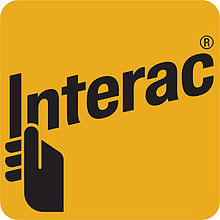If credit cards are merely thin plastic behaviour trackers leaking your private information into a sea of marketers, cash seems the only way to maintain your privacy. What about debit? That is the question @dchymko had in response to my post on how I use cash pretty much exclusively these days. Daryl asks:
[tweet 771027128183693312 hide_thread=’true’]
An interesting question. If you use the debit card of a small credit union, it is unlikely that they have the bandwidth to be selling on your consumer activity. But what about the debit network itself? That network sees all transactions and would be a treasure trove of data, ripe for monetization. Time for an investigation. 
I was surprised to find that Canada has a pretty interesting system. In the US, credit card companies typically provide debit card services (which probably means they are a privacy sieve just like regular credit cards), but in Canada we have Interac running the inter-bank system, which turns out to be a non-profit! That sounds positive. Even more positive, when Interac tried to become a for-profit company in 2010, it was rejected by the Competition Bureau, which may have indirectly protected the private information of millions of Canadian debit users. But that is just speculation.

All in all, this sounds pretty great, but I wanted to be sure. Looking at the Interac website, I could see that they do release some consumer purchase information, but it seemed pretty high level. I wanted to find out more, so I sent a mail to privacy@interac.ca. Unfortunately, I got no reply. After a few weeks I asked on Twitter and was able to get ahold of a communications manager. My email to Interac asked:
Credit card companies often partner with marketing intelligence agencies like Experian and Axiom, with whom they share consumer information like purchasing habits etc.
Does Interac or Axcsys collect and share or re-sell consumer data to third parties?
Interac’s reply:
Thanks for reaching out. To answer your question, no, we do not share or re-sell personal consumer data to third parties. The only data we share is limited aggregated data. For example, the number of debit transactions in 2015, how many e-Transfers are conducted annually, etc.
None of this data used in aggregate could ever be linked back to individual consumers. Hopefully this helps, let me know if you have any additional questions.

Seems pretty positive, but that term “limited aggregated data” stuck out to me, so I followed up:
As someone who has worked in big data, “aggregated” is a relative term. I would like to get as specific as possible.
Do you categorize consumer spending patterns? Can you share a small sample of the data?
Who do you share this aggregated data to? Can you give me examples? How much does it cost? Is there a public pricelist?
That email was sent on October 13th 2016 and has yet to receive a reply.
I asked those questions thinking about Bell’s RAP program, which used “aggregated user data” to target ads, a program they had to give up. I wanted to determine if Interac had some sort of categorization scheme like Bell which they could use for either purchases or individuals. But the comms guy at Interac has gone dark, and my investigation seems to be over.
If we could get the proper assurances from Interac, I would love to use debit more. As @chrisfosterelli points out:
[tweet 771028494553714688 hide_thread=’true’]

